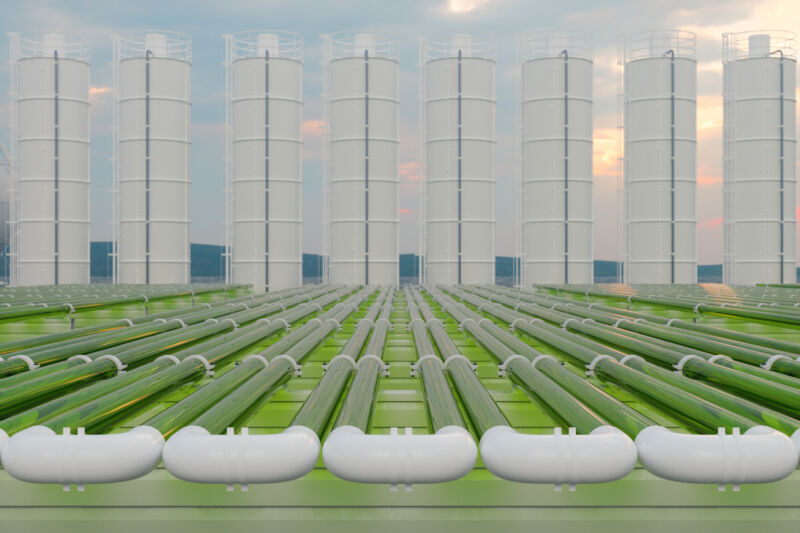Biden administration lays out plan for four carbon-capture facilities

Enlarge / Bioreactors that host algae would be one option for carbon sequestration-as long as the carbon is stored somehow. (credit: Getty Images)
On Thursday, the US Department of Energy (DOE) announced the latest program to come out of the bipartisan infrastructure funding package that was passed last year. In this case, the money is going to foster the development of a technology that we'll almost certainly need but is currently underdeveloped: capture of carbon dioxide from the air and its stable storage. The infrastructure law set aside $3.5 billion for direct air capture, and the DOE plans to use that to fund four facilities spread across the US.
Direct air capture has suffered from a bit of a catch-22. Most scenarios for limiting end-of-century warming assume we'll emit enough carbon dioxide in the next few decades to overshoot our climate goals and will therefore need to remove some from the atmosphere. That would necessitate the development of direct air capture technologies. But, at present, there's no way to fund the operation of a facility to do the capturing, so the technology remains immature and its economics poorly understood.
The DOE's funding has the potential to change some of that. It has a total of $3.5 billion to spend in the years 2022 through 2026. It plans to use that to fund four carbon-capture and storage centers spread across the US, each with the capability of permanently storing a million metric tons of carbon dioxide a year.
Read 5 remaining paragraphs | Comments